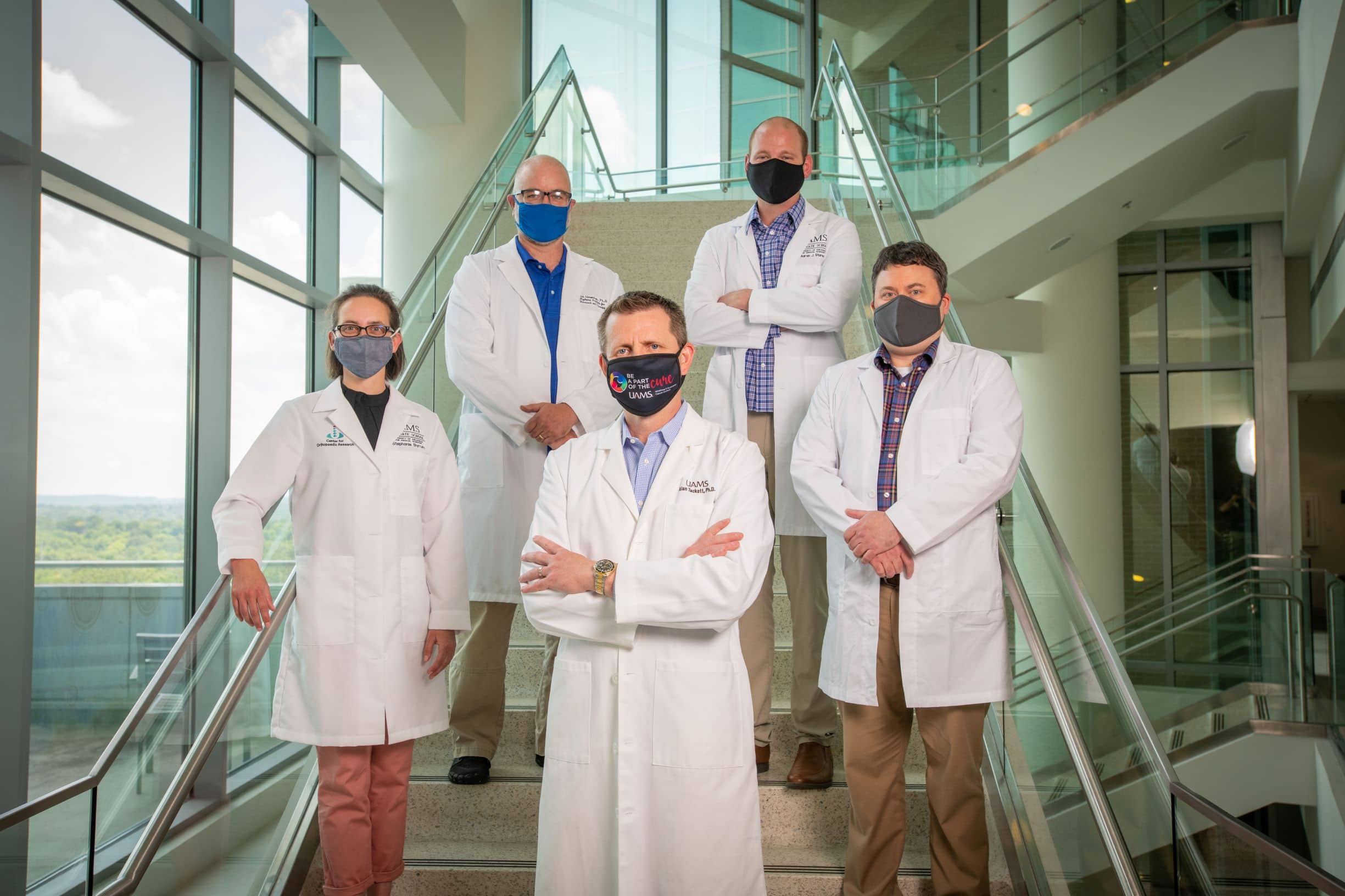Cancer Discovery Published in Nature Highlights National Role of UAMS Research Team
| LITTLE ROCK — A highly specialized UAMS research team that serves as a national resource recently helped the University of North Carolina (UNC) discover a key driver of cancer cell development.
The discovery, which gives researchers around the globe a new target for drug therapies, was published in the journal Nature.
The achievement put an exclamation mark on a successful first year for the UAMS team, called the IDeA National Resource for Quantitative Proteomics.
The study was led by researchers at UNC Chapel Hill and the UNC Lineberger Comprehensive Cancer Center. Five UAMS researchers representing the proteomics team are co-authors on the Nature publication.
Proteomics researchers at UAMS, led by Alan Tackett, Ph.D., use powerful computing tools to help make sense of enormous amounts of biological data. This includes creating functional maps of cells and other techniques that lead to better understanding of the molecular pathways in cancer and other diseases. Along with its state-of-the-art instrumentation, the National Resource at UAMS has 15 uniquely trained researchers who specialize in solving challenging scientific problems such as the one presented by UNC.
The UAMS proteomics team is the only such National Institutes of Health (NIH) National Resource in the United States. It was established last year by Tackett, who secured a five-year, $10.6 million grant to serve biomedical researchers across the country. Tackett is a professor in the College of Medicine Department of Biochemistry and Molecular Biology and deputy director for the UAMS Winthrop P. Rockefeller Cancer Institute. Other UAMS faculty who were key in establishing this National Resource and are co-authors on the study are Stephanie Byrum, Ph.D., Rick Edmondson, Ph.D., Samuel Mackintosh, Ph.D., and Aaron Storey, Ph.D.
Since it launched in August 2020, the National Resource at UAMS has processed hundreds of service requests from more than 100 research labs across the country. It has supported research projects funded by grants of more than $22 million.
In addition to speeding the pace of biomedical discoveries, the National Resource will help the UAMS Winthrop P. Rockefeller Cancer Institute achieve National Cancer Institute (NCI) Designation, said Michael Birrer, M.D., vice chancellor and director of the Cancer Institute.
“The National Resource at UAMS and the Winthrop P. Rockefeller Cancer Institute is one of a select few NIH-supported resources that serve the entire United States, which puts us at the forefront of supporting studies on a variety of human diseases including cancer,” said Birrer.
To achieve NCI Designation, cancer centers undergo a highly competitive assessment process that demonstrates an outstanding depth and breadth of research in three areas: basic laboratory, patient/clinical and population-based. The designation brings with it many benefits, including expanded access to federal funding for researchers and improved access to clinical trials for patients.
Tackett, whose team provided the foundational data to help UNC find a molecular mechanism that leads to cancer development, expects the Nature publication to garner plenty of attention from drug researchers.
“These findings are exciting because we now have a more fundamental understanding of why cancer is cancer,” said Tackett, who holds the Scharlau Family Endowed Chair for Cancer Research at UAMS. “It is highly impactful and translational, meaning it has great potential for the development of new cancer therapeutics.”
UNC Lineberger’s Greg Wang, Ph.D., the lead author on the study, praised the UAMS team for its work.
“The cutting-edge proteomics setup and platform run by Dr. Tackett and his fantastic team at UAMS have provided crucial insight of the interactomes (molecular interactions of a cell) of the studied oncogenic factors (mutated genes that cause development of cancer tumors),” Wang said. “This result is highly informative. The UAMS team and our UNC team have produced multiple impactful papers together in recent years.”
The researchers found that a mutation that fuses two unrelated genes can promote a process similar to that observed when oil and water are mixed but do not blend together, according to a UNC news release about the discovery. The process, called liquid-liquid phase separation, occurs inside a cell’s nucleus and enables the formation of compartments with various physical properties that can promote cancers such as acute leukemias.
“Phase separation and its role in cancer has been a missing puzzle piece in understanding the development of human cancers,” Wang said. “This finding is among the first to link phase separation to development of these terrible diseases.”
While the study focused on leukemia, the mechanism involved applies across many cancers.
“It’s possible that a broadly applicable therapeutic could result from these findings,” Tackett said.
The National Resource at UAMS was initially created through the Arkansas INBRE (IDeA Network of Biomedical Research Excellence) — an NIH program that promotes biomedical research for undergraduate students and faculty. Lawrence Cornett, Ph.D., a professor in the UAMS College of Medicine Department of Physiology and Biophysics, serves as principal investigator and director of Arkansas INBRE.
